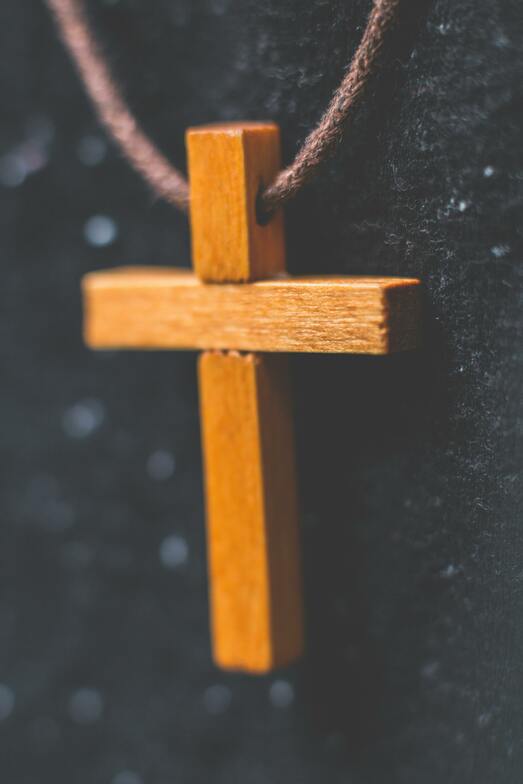
I once had a friend who had this real deadpan sense of humour. Anytime he saw someone wearing a cross, he would go up to them and say, “Excuse me. May I ask why you’ve chosen to wear a medieval torture device around your neck?”
Needless to say, he wasn’t terribly popular! I suppose my friend did have a point. From the 6th century BCE to the 4th century CE, the Romans (among others) used the cross as a means of capital punishment. Crucifixion was the form of execution reserved for criminals and those deemed enemies of the state. This was, of course, the method by which Jesus was killed as were many of his disciples.
For the early followers of Jesus to have worn or upheld the cross as a public symbol of their faith would have exposed them at best to ridicule and humiliation and at worst, to persecution and death. It wasn’t until the Roman Emperor Constantine converted to Christianity that the cross ceased to be a form of punishment and became a more celebrated symbol of Christian faith. Constantine abolished the practice of crucifixion and with the Edict of Milan Christians were at last shown tolerance by the state. “Holy Cross” as a feast day celebrates the Church of the Holy Sepulchre in the old quarter in Jerusalem where Constantine built a basilica. It was here that the cross is said to have been venerated for the first time.
Despite the cross being lifted up as an instrument of Christian worship, it remained in Constantine’s time a sign of imperial power and I would say political violence. Constantine’s successors right through the Middle Ages used the cross to lead invasions such as the Crusades, a series of religious wars where the Euro-Christian Empire wiped out entire populations of Muslims living in Jerusalem and the Holy Land. This is to say nothing, as we learned on Friday at the Understanding Intergenerational Trauma and Healing presentation, of the colonization and attempted genocide of Indigenous Peoples in Canada, initiated, supported, and in large part paid for under the banner of the cross.
So, is my friend right? Is the cross nothing more than a medieval torture device, a symbol of imperial power and violence? If that’s the case, what on earth are we doing celebrating “Holy Cross Day” or “The Exaltation” or “The Triumph of the Cross” as the feast was originally named?
There’s a prayer that we sometimes say in Anglican land. It’s a brilliant prayer. It goes: “Merciful God, through the death of your beloved Son you transformed an instrument of shame into a sign of hope and glory. Receive all we offer you this day, and renew in us the mystery of his love; through the same Jesus Christ, the Lord of glory.”
When we say that through the cross God transformed an instrument of shame into a sign of hope and glory, we must ask ourselves for whom was that instrument of shame transformed? For whose hope? Whose glory? For those in power? For those seeking political, economic, or ideological expansion at the expense of human life? Or is it for the victims of such violence looking for a sign that they will one day be set free?
The American conservative and political activist Charlie Kirk was killed last week when he was shot during an event at Utah University. Kirk was known widely for his role in the MAGA movement and for his opposition to gun control, abortion, LGBTQ rights, his criticism of Martin Luther King Jr and the Civil Rights Act of 1964 and his promotion of Christian nationalism. In the days following his death, a video has been circulating on social media. Kirk is asked what he would hope to be remembered for if and when he died. Kirk says that he would hope to be remembered for his Christian faith.
Kirk spoke regularly of the death and resurrection of Jesus, of Jesus’s saving power through the cross. A question I have of Kirk’s faith is this: for whose benefit did Kirk lift up that cross? For whose hope and glory? For those who follow the way of suffering and death through no fault of their own, or for those who use the cross to advance ideological and political views at the expense of human life?
In April of 2023, while speaking at a church in Salt Lake City, Kirk famously said, “It’s worth it to have a cost of, unfortunately, some gun deaths every single year, so that we can have the Second Amendment to protect our other God-given rights.”
“That,” he finished, “is a prudent deal.”
With all of the violence in the world done in the name of Jesus, I am tempted sometimes to want to part with the cross altogether. Perhaps an empty tomb or a humble manger ought to be the symbol we wear around our necks instead? I stay with the cross because it reminds me of something I pray I never lose sight of: ours is a faith that has borne both violence and transformation. We must constantly search our hearts for why we lift up that cross. For whom do we call it holy? For those who seek its origins as an instrument of violence or for those who lift it up—as our Lord did—as a precursor to resurrection and new life?
Yesterday I attended a retreat for Diocesan Council, the committee which meets to discern and mobilize ministry in the Diocese of New Westminster. The Executive Archdeacon Nick Pang led us in “A Blessing for Those Who Hold Power” by John O’Donohue. It feels relevant on this Holy Cross Day to close with a few lines from the poem.
May your power never become a shell
Wherein your heart would silently atrophy.
May you welcome your own vulnerability
As the ground where healing and truth join.
May integrity of soul be your first ideal.
Amen.
